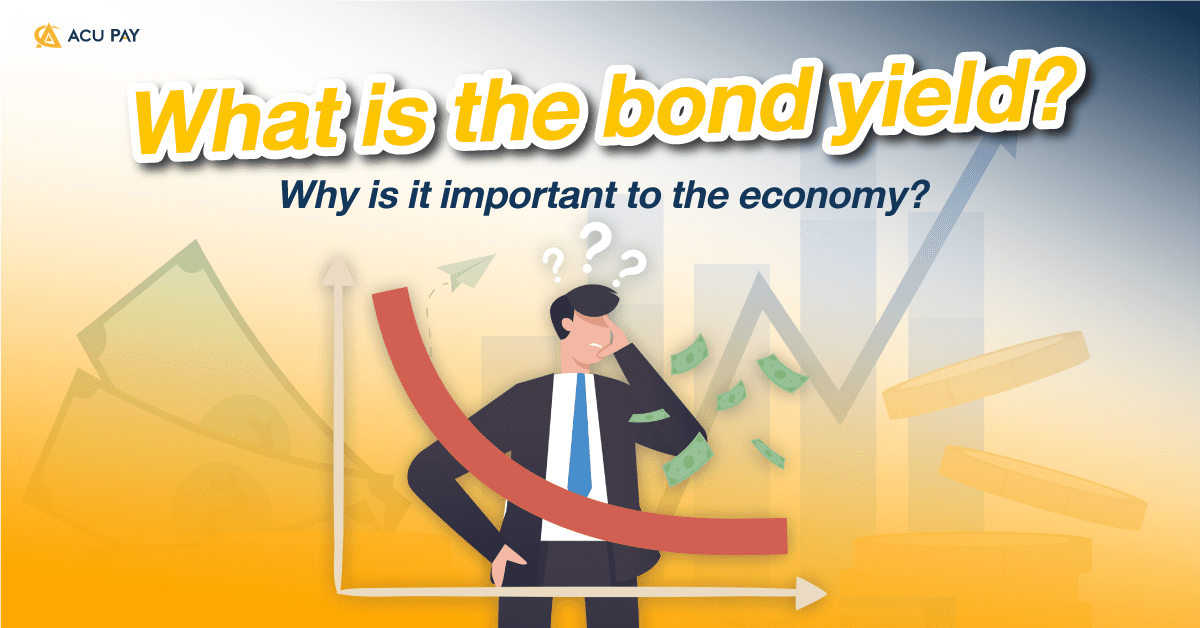

Bond yield is another important factor for investment in both foreign countries and Thailand. Especially during times when there is a very high up or down movement like this period.
“Bond Yields” are different from general market interest rates. Because bond yields can be adjusted up or down depending on the market interest rates at the time the bonds are traded.
For example, Company A issues corporate bonds (Debt Instruments/private bonds) with a yield of 2%. But with the rising interest rates, the government later issued bonds to raise funds with a yield of 2.5%.
In the above case, the resulting, the rate of return on the company A bonds are not attractive to investors. But if investors sell the bonds to find new bonds or government bonds with better returns, Investors who hold Company A bonds must sell the bonds they hold at a lower price in order to increase the bond yield.
On the other hand, if interest rates continue to fall, investors in Company A bonds get a yield of 2% while the government issues bonds to raise funds at an interest rate of 1.5%, allowing Company A bondholders to sell the bonds at a higher price because there is no need to lower the bond price for the bond yield to increase.
The impact on stock market movements is the result of investors comparing investments in two markets; the debt instruments/bond market and the stock market, based on the yield gap between the bond market and the stock market (earning yield gap).
If yields in the bond market were higher, the earnings yield gap would be lower, meaning the stock market would be less attractive because investors could hold bonds. (at lower risk), but the rate of return is equal to that of investing in the stock market. On the other hand, if the yields in the bond market fall, the earnings yield gap will increase, which in turn increases the attractiveness of the stock market.
The bond yield that has the most impact on the global investment direction is probably the US bond yield. If the US Federal Reserve raises interest rates to curb inflation, it will increase bond yields in the market as well.
The bond yield that has the most impact on the global investment direction is probably the US bond yield. If the US Federal Reserve raises interest rates to curb inflation, it will increase bond yields in the market as well.
However, bond yields are limited, for example, when governments need to borrow money for economic activities. It is almost impossible for governments to issue bonds to raise funds at a gradually increasing interest rate to attract investors because it will result in the burden of public debt increasing too much.
Even though the bond yield is rising, if earnings per share of listed companies (EPS) are high, it will result in a decrease in the earnings yield gap and will also attract people to invest in the stock market. (From the formula, Earning Yield Gap = EPS/Share Price*100)
"If a country has a strong profitability of listed companies, it is always up. The stock market can still go up. There is no need to go down when the bond yield increases. But if the bond yield increases and the profits of the company are bad, it will be the point where money flows out of the stock market.
There are usually 3 types of yield curves: Steepening, Flattening and Inverted.
Steepening is the condition in which the spread between short-term and long-term bond yields increases.
Flattening is the condition that the spread between short-term and long-term bond yields is narrower.
Inverted is a condition where short-term bond yields are higher than long-term bonds.
At present, inflation and interest rates are rising. This causes the spread of short-term and long-term bond yields to narrow (flattening), or short-term bond yields increase faster than long-term bond yields. This makes investors worry that the yield curve will continue to invert, indicating a recession as it has in the past.
Short-term US Treasury yields have risen sharply this year. The market expects the Fed to continue raising interest rates throughout the year. Meanwhile, long-term US Treasury yields rose less on concerns that central bank policies would drag the US economy down. As a result, the general US bond yield curve slowed. But there are some periods that move up, especially in the short term.
However, if inflation increases, and the government uses a fixed policy by raising interest rates to curb inflation, this will cause short-term bond yields to rise further, increasing the risk of a recession in the near future.